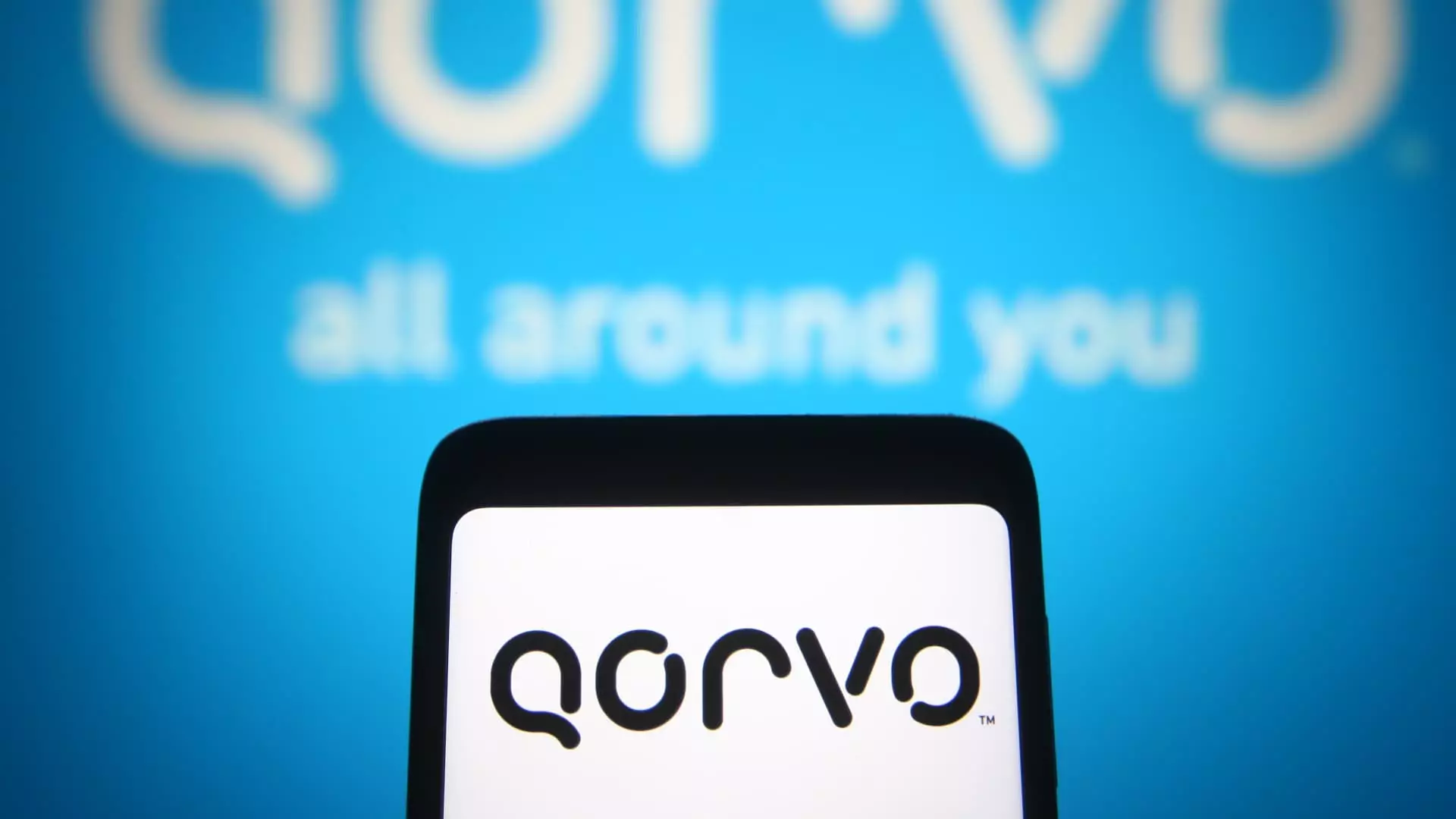Qorvo Inc. stands as a prominent entity in the semiconductor industry, with a focus on delivering diverse semiconductor solutions crucial for modern technology. Established through the merger of RF Micro Devices and TriQuint Semiconductor, Qorvo is segmented into three core divisions: the High Performance Analog (HPA), the Connectivity and Sensors Group (CSG), and the Advanced Cellular Group (ACG). Each segment is integral to Qorvo’s business model, catering to an expansive range of sectors, including mobile devices, wireless infrastructure, and defense technologies. Despite its diversified interests, a strong reliance on cellular RF solutions, particularly in the smartphone market, poses both opportunities and challenges for the firm.
As of recent evaluations, Qorvo’s market capitalization hovers around $8.41 billion, translating to a stock price of approximately $88.94 per share. The fiscal year 2024 reported revenues of $3.77 billion, with a striking 75% derived from its Advanced Cellular Group, underscoring the company’s dependency on a concentrated market. This revenue structure raises red flags, especially considering that a sizeable portion—46% and 12%, respectively—comes from two main clients, Apple and Samsung. Such concentration can pose risks, especially in a volatile market environment, should either client decide to decrease their orders or move to competitors.
Recently, the spotlight has shifted to Starboard Value, a seasoned activist investor known for its strategic interventions in the semiconductor sector. With previous successful campaigns at various semiconductor companies, Starboard’s acquisition of a 7.71% stake in Qorvo signifies a pivotal moment for the company. Their approach is fundamentally rooted in operational efficiency and margin enhancement, which Qorvo desperately needs, given its lagging profitability metrics compared to industry counterparts such as Skyworks Solutions. Starboard’s proven track record—averaging an astonishing return of 85.87% across its previous semiconductor campaigns—suggests they possess the expertise to instigate meaningful reform.
To understand why Starboard’s involvement could be revolutionary for Qorvo, it is essential to dissect the company’s operational landscape. Qorvo’s gross margin of 39.5% and operating margin of 8.3% pale in comparison to Skyworks’ 44.2% and 24.9%, respectively. This stark contrast indicates a fundamental inefficiency in Qorvo’s operations, warranting a thorough internal review. Investigating the excessive spending in selling, general, and administrative expenses is crucial; at 10.3% of revenue, Qorvo’s expenses exceed Skyworks by nearly four percentage points, indicating a potential area for substantial cost reduction.
Moreover, additional expenditures categorized as “other operating expenses” amounting to over $100 million could hint at poor operational management. Such financial metrics illuminate a glaring need for discipline, suggesting that Starboard’s agenda of instilling a cost-conscious culture could lead to enhanced margins.
Starboard’s activist playbook outlines a strategic framework based on enhancing shareholder value through disciplined management and operational efficiencies. In previous campaigns, Starboard has pressed for board seats and insisted on restructuring to optimize manufacturing processes and reduce unnecessary capacity. Qorvo’s scenario is no different. With multiple board members figuratively married to their roles for a decade, fresh perspectives may be imperative for revitalizing strategic initiatives.
The semiconductor industry has witnessed significant consolidation in recent years, which positions Qorvo favorably for potential reinvention. Amidst a pool of experienced leadership emerging from merged firms, identifying a seasoned operator to lead the company could be a transformative step.
The timeline for potential boardroom changes becomes crucial as Qorvo braces for its next director nomination window in early 2025. Considering Starboard’s established rapport with several current directors from previous engagements at TriQuint, a swift resolution appears probable. Such collaboration would empower Starboard to evaluate whether Qorvo’s management is equipped to drive the necessary performance turnaround.
Ultimately, Qorvo finds itself at a crossroads. The combination of its industrious product innovation and the looming threat of activist investors could catalyze a crucial transformation. By focusing on operational diligence, margin enhancement, and strategic leadership, Qorvo could indeed reclaim its footing within the competitive semiconductor landscape. The flair of revival, grounded in efficiency and responsive management, is critical for establishing sustainable growth and enhancing shareholder confidence in the coming years.

